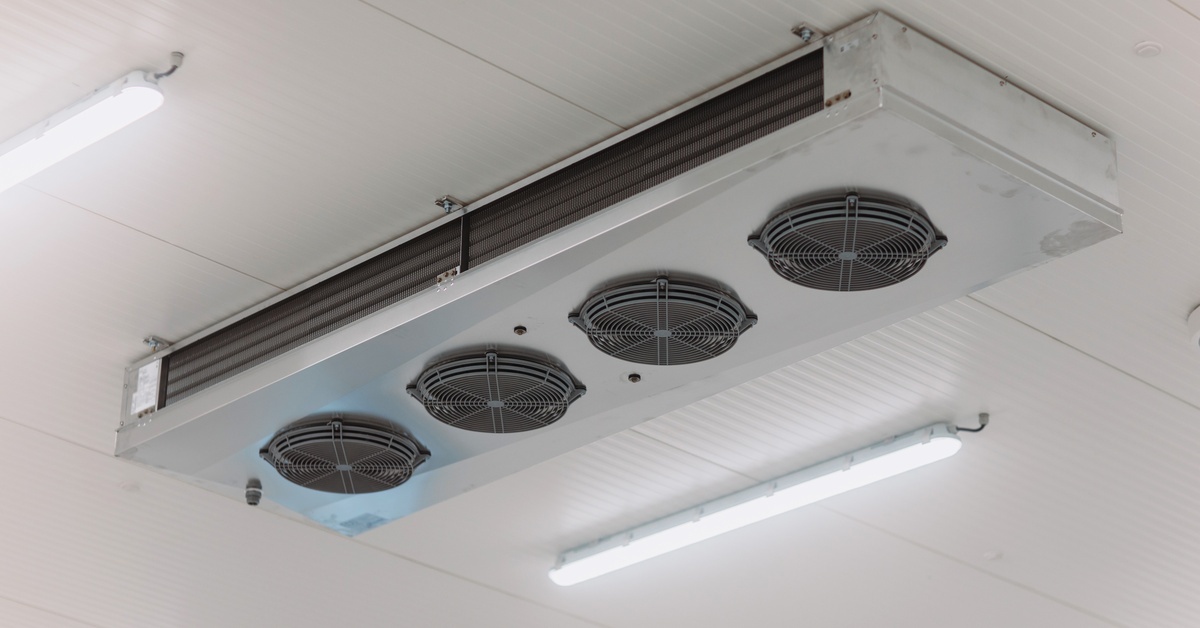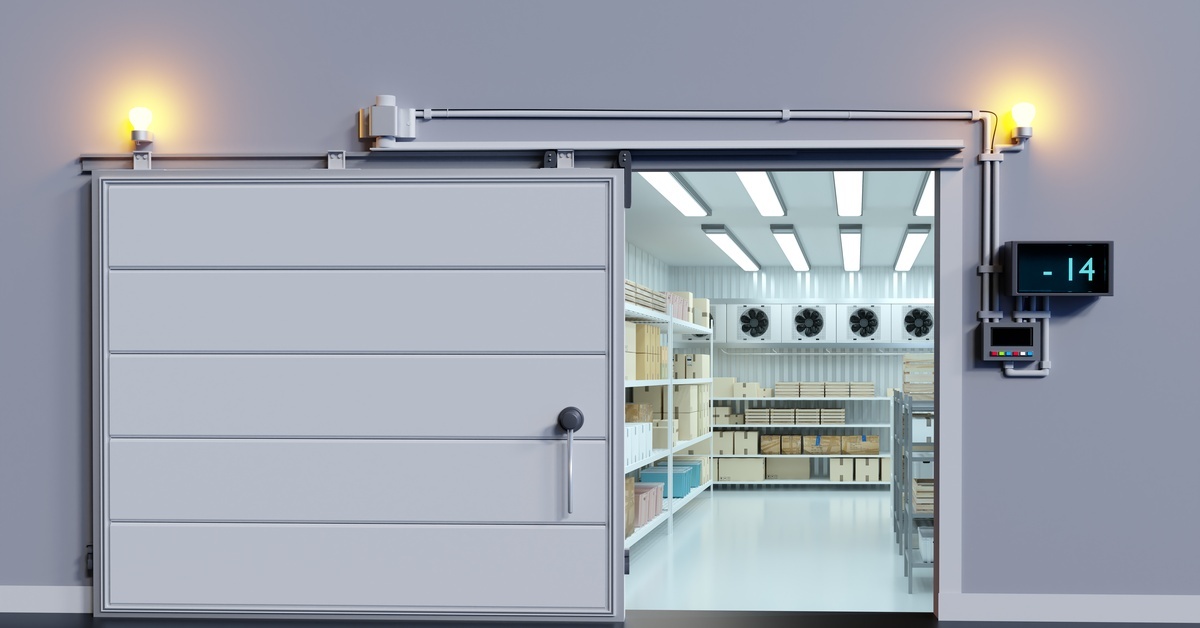10 Types of Refrigeration Units for Walk-In Coolers
27th May 2025
Many establishments use walk-in coolers, including restaurants, grocery stores, hospitals, and florists. The refrigeration units inside the coolers control the area’s temperature to protect the integrity of medicine, perishable food, and more.
Coolstructures offers several types of refrigeration units for walk-in coolers. Whether you’re looking for operational efficiency, cost-effectiveness, or preservation capabilities, we can help you find what you’re looking for by explaining the differences between these models.
1. Integral Refrigeration Units
One of the most common types of refrigeration units is an integral, or self-contained, unit. The system houses the majority of the important components—including the compressor, evaporator coil, and condenser—within a single unit. The design is popular because the connected unit is easy to install and maintain.
Many businesses mount integral refrigeration units on the ceiling or back wall of the walk-in cooler. They work well in small spaces because of their compact design.
2. Remote Refrigeration Units
Remote refrigeration units separate their components into different locations. You can install the compressor and condenser in an outdoor location or mechanical room, and store the evaporator cooler remains inside the cooler itself. Businesses that use these units benefit from reduced noise production within the walk-in cooler space since it keeps the loud components away from the cooler.
Remote units are an excellent choice for large cooling applications or businesses that require quieter operation. These systems come with high installation costs and demand a professional setup to link all of the parts together.

3. Split Refrigeration Systems
A split refrigeration system is a variation of remote refrigeration that divides the evaporator and condenser into separate units. Installing the condenser outside of the walk-in cooler allows it to disperse heat, while the indoor evaporator maintains the desired temperature.
The system is useful in establishments where heat dissipation is a concern, especially in regions with higher ambient temperatures. They also allow businesses to maintain lower indoor temperatures by moving heat rejection outdoors. However, like other remote systems, they require more complex installation and may add to initial costs.
4. Air-Cooled Refrigeration Units
Air-cooled units remove heat from the system through mechanical movements. The internal fans circulate air over the coils, allowing for heat dissipation. This is a popular option for both its simplicity and affordability.
Companies can choose between integral and remote air-cooled units, allowing them to reap the benefits of either option to suit the needs of their applications. Businesses need to ensure their space has adequate airflow for these systems to work. While effective, they may struggle in cramped or poorly ventilated spaces.
5. Water-Cooled Refrigeration Units
Water-cooler systems operate similarly to air-cooled units. Instead of relying on mechanical movements, water-cooler systems use water to remove heat. The units include a water loop that transports the heat away from the condenser, offering great cooling efficiency in high-temperature environments because water absorbs heat more effectively than air.
They’re good choices for those seeking a quieter walk-in cooler. However, they consume more resources and require a reliable water source. They also involve plumbing infrastructure, which can increase setup complexity and cost.
6. Low-Temperature Refrigeration Units
Another type of refrigeration unit for walk-in coolers is a low-temperature system. These units emphasize sub-zero temperatures, making them an essential choice for places that need to preserve food or perishable items for extended periods.
Low-temperature refrigeration involves a powerful compressor capable of handling the demanding requirements of deep freezing. It’s an excellent choice for blast freezers or walk-ins used to store frozen inventory.
Nevertheless, they use a lot of energy. Make sure that your business can handle the extra power and expenses that come from running this type of refrigeration unit.

7. Medium-Temperature Refrigeration Units
Medium-temperature refrigeration units work well for cooler temperatures, generally between 28 and 60 degrees Fahrenheit. These systems are ideal for preserving fresh produce, dairy, and beverages.
Because they don’t reach the freezing temperatures of low-temperature units, they consume far less energy. They are an efficient choice for businesses focusing on cost control without compromising effective inventory storage.
8. Slide-Out Units
Slide-out units are a convenient design feature found in some refrigeration systems, typically integral or self-contained units. Manufacturers install the compressor and condenser on a slide-out tray, making it easy for businesses to access these components for cleaning, maintenance, or repairs.
This convenient system helps workplaces save a lot of time and reduce delays, especially if you need to perform regular routine maintenance. While they emphasize user-friendliness, they work best in small or medium-sized systems rather than larger coolers.
9. Rack Refrigeration Systems
Rack refrigeration systems cater to large-scale cooling needs, offering a centralized solution to support a network of walk-in units. These systems combine multiple compressors on a single rack and share the cooling load to improve efficiency and maintain temperature reliability.
Large kitchens, grocery stores, or food distribution facilities greatly benefit from the ease and convenience of these units. Because the racks can handle multiple cooling zones, they provide a lot of flexibility and can help reduce energy waste. However, their scale and sophistication require significant up-front investment and maintenance planning.
10. Specialty Refrigeration Units
Some applications require specialty refrigeration units that can handle their specific operational requirements. These systems may have extra features like enhanced humidity control or dual-temperature zones for mixed inventory.
While they’re an efficient cooling option, businesses should keep track of their requirements before investing. The extra work that goes into tailoring specialty refrigeration units makes them a large investment and may come with extra costs regarding maintenance or replacement.
Which Option Is the Best for Your Business?
Deciding on the ideal refrigeration unit involves understanding the needs of your business, the items you must keep cool, and whether you have a small walk-in or a large-scale cooler. Consider factors like cooling capacity, energy efficiency, installation requirements, and operational noise when making your selection. Evaluating these aspects thoroughly can make a big difference in maintaining long-term efficiency and keeping your business running smoothly.
Choose Coolstructures for a walk-in cooler refrigeration system and experience unparalleled quality and reliability. We have a wide range of refrigeration units to meet your business’s special requirements. Contact us today with any questions, comments, or concerns, and see if we can find the right unit for you.

